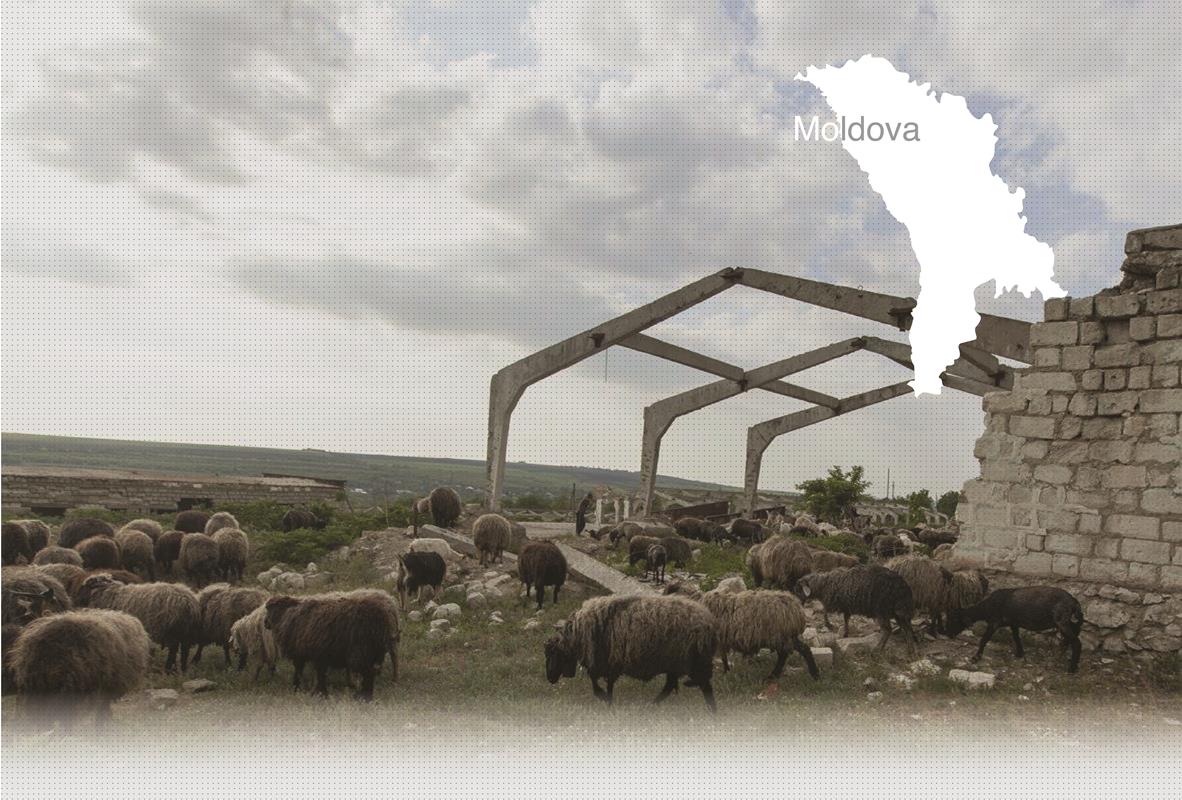

1 Killing site(s)
Petre K., born in 1927: “The war broke out on the 22nd of June, 1941. On that very day, it was a Sunday, the village was bombed. German and Romanian soldiers entered Pîrlița in July. Right away, they started to hunt for Jews. Several soldiers would go from house to house and detain Jews. Once the Jews were gathered, they brought them to the ravine outside of the village. I heard people saying Jews were going to be killed, so I went to see because I was curious. Near the ravine, I saw about fifty Jews: men, women and children. They were shot on the edge of that ravine with submachine guns by three German shooters. The bodies were buried after the execution by the soldiers themselves. The advancing forces didn’t even stop in the village for the time of the execution. While Romanian and German soldiers were walking through, only one officer with several soldiers perpetrated the shooting and then, they joined the others and left. Jewish houses were looted by locals. Some of them were sent to Siberia after the war. A week after the execution, Romanian soldiers took over the village (…)” (Eyewitness N°188Mo, interviewed in Pîrlița, on November 23, 2014)
Pîrlița is a commune in Ungheni District, Moldova. It is composed of two villages, Hristoforovca and Pîrlița. In the 19th century, when the village was founded, most of the residents of Pîrlița were Jewish. They were manly traders and farmers. At the end of 1930, there were 1,064 Jews living in Pîrlița. Their main occupation was trading mainly wheat and furs. Some Jewish residents of Pîrlița owned flour mills. According to Petre K., born in 1927, the Jews occupied the central street of the village. They made loans to villagers which they repaid by giving them part of their harvest. There was a Jewish school in Pîrlița as well as a synagogue – both built of stone. A rabbi lived in the village before the war. The community had also its own cemetery.
The village was occupied by German and Romanian troops on July 7, 1941. Many Jews from the village managed to escape along with the retreating Russian army. The soldiers that entered the village belonged to the German 9th Army and the Romanian 5th Division. Directly after their arrival, they started to identify Jewish properties and began looting Jewish houses and shops. Criminal acts lasted for several days, including the beating and killing of local Jews. During those first days of the occupation, many Jews were killed by the Romanian and German troops passing through the village. However, murders of Jews continued. According to available sources, Romanian soldiers gathered a group of 300 Jews and brought them to the Jewish cemetery. Jewish men were forced to dig two pits. Once the mass graves were ready, the Jews were shot and buried in those. Romanian soldiers abused Jewish women before the execution. Many other Jews were shot in the fields of Pîrlița while they were trying to flee or hide. During the research trip to Moldova in 2014, YIU’s team were unable to find any eyewitness of this execution or locate the mass graves in the cemetery.
With the help of local witness, Petre K., born in 1927, YIU’s team located another mass grave of about fifty Jews from Pîrlița. They had been rounded up and shot by Romanian and German soldiers in July 1941 in a ravine on the outskirts of the village.
The Jews who managed to avoid the killings were sent to Răuţel Camp where many died from starvation and disease. In September 1941, Răuţel Camp was evacuated, and the survivors were marched to Mărculeşti Camp until being deported across the Dniester to Transnistria.
By order of the mayor of the town, Jewish houses in Pîrlița were dismantled. The synagogue was used as a dormitory for soldiers. The Jewish cemetery was also destroyed. The headstones were used by local peasants to build pigsties.
Do you have additional information regarding a village that you would like to share with Yahad ?
Please contact us at contact@yahadinunum.org
or by calling Yahad – In Unum at +33 (0) 1 53 20 13 17